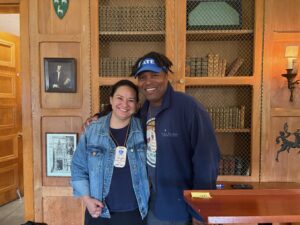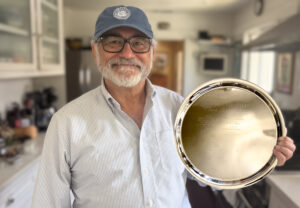Alumni News
Chrysta Goto Torres '00
Chrysta Goto Torres ’00 Returns to Cate
The Johnson Library seemed untouched by time: the same wooden floor creaked with every step, and the shelves overflowed with worn encyclopedias, Abraham Lincoln chronicles, and weathered journals from the gold rush era. The library was packed to the brim with boisterous alumni shuffling chairs, grabbing iced tea and protein bars, laughing loudly, and eagerly awaiting a Cate Master Class in history. “A Look at the Most Significant U.S. Events in the 21st Century” was about to begin with the appearance of a beloved long-time instructor, Juarez Newsome. In typical Newsome fashion, he walked in nonchalantly through the side door and said, “What up? Today, we will talk about the most important historical events during your time at Cate – political, social, or economic.”
For Chrysta Goto Torres ’00, attending the Master Class wasn’t just a weekend highlight, but a walk down memory lane. Newsome was Chrysta’s advisor in her 11th grade year. She fondly remembers his signature candor and biting wit. The class stirred a wave of nostalgia, bringing back memories of campus life and their unique advisor-advisee dynamic. Chrysta recalled Newsome’s long-standing tradition of running the fantasy football pool among faculty. One evening, she brokered a deal: she would take on the responsibility of tallying the football scores in return for the rare privilege of watching TV, a prized commodity in dorm life in the late 1990s.
During Camp Cate and her 25th class reunion, Chrysta reflected on her life and the enduring role Cate has played in shaping it. Her journey began in the fourth grade when she learned about and decided to attend Cate while living with her family in Saudi Arabia. Now, decades later, she credits the School with instilling values that continue to guide her—critical thinking, curiosity, and a deep commitment to inclusion. These values have become central to how Chrysta navigates the world, including how she approaches her child’s education and civic engagement. For her, returning to the Mesa is more than a visit—it’s a reaffirmation of purpose.
“Returning to Cate gives me a grounding foundation every time I visit,” she said. “It is a place that always feels like home, and you share this experience with others who feel the same way.”
Moments of reflection were everywhere during Camp Cate. Alumni wandered the Robert A. Day ’37 Walkway, paused to take in the sweeping mountain views from Sunset Bench, moved quietly past the Katharine Thayer Cate Memorial Chapel, and shared laughter and stories with old friends. For Chrysta, Juarez Newsome’s Master Class was a highlight—full of fun and insight—but her time on campus struck a more resounding chord. In a constantly shifting world, she was reminded that one thing remains beautifully steady: the feeling of coming home to the Mesa, where familiar faces and beloved places still welcome you back, whether it’s been five or fifty years.
The Class of 1975 marked their 50th reunion in style this past weekend—and no one embodied that spirit more than Lex Passaris ’75, recipient of the Van Cott Niven Award. From rallying classmates to crafting a nostalgic slideshow, and designing a custom blue “50th Reunion” Cate hat, Lex poured his heart into the celebration.
Members of the Class of 1975 and their spouses kicked things off early with a trip to Santa Cruz Island, on the Thursday before reunion weekend. There, they hiked, sailed, and soaked in the coastal beauty. On Friday, they arrived at the Camp Cate Kick-Off Party proudly wearing matching blue hats. Later in the evening, they gathered on Parsonage lawn to share a glass of wine and watch the sun set. They swapped stories and reconnected over memories that have stood the test of time.
One of Lex’s favorite memories is spending time in Hitchcock Theatre, alongside classmates Chris Foster ’75 and Marty Troup ’75. In the 1970s on the Mesa, Saturday night movies were a major event, and the trio helped run the show. Lex also recalled the early days of Bothin, when the dorm had no doors on either end, allowing the chill to sweep right through. “Mr. Cate made us take cold showers”, Lex laughed—a memory that captures early campus life.
Lex is a devoted caretaker of Cate’s visual history. In preparation for the reunion, he restored old photographs—removing scratches, enhancing details, and breathing life back into the past. He brought back to light a vintage student film, Blank Show, originally created by former faculty, John Rupert, and Jim Haggin ’76, Cecile de Mille ’75, Whit Riggs ’75, and Blake Snyder ’75.
Lex’s archival efforts go back decades. Before Cate’s Centennial Campaign, he took it upon himself to digitize deteriorating recording tapes that were nearing the point of no return. He managed to recover and preserve what he could, including footage the Class of 1977 had transferred years ago. And he’s still at it. During Camp Cate this year, Lex discovered a bin full of photo negatives in the Archives. He plans to digitize each one, continuing the work that connects generations of students through images and stories.
When asked what part of campus still resonates the most, Lex didn’t hesitate – the Johnson Library. “I can still smell the pipe tobacco and cigarettes embedded in the wooden walls,” he said. The memory lingers—etched into the grain of a place he still calls home.
It is for these reasons stated above that Lex Passaris ’75 is awarded the Van Cott Niven Award. This award recognizes an individual for their exemplary service to the School and for their ability to keep members of their class in touch with one another. Thank you,
Lex.
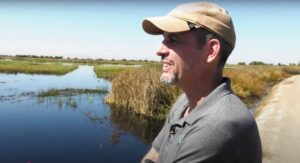 Cannon Michael has been recognized for his leadership in sustainable agriculture, receiving the Los Banos Leopold Conservation Award for his dedication to water conservation, soil health, and habitat restoration. As president of Bowles Farming Company, he oversees 11,200 acres in California’s San Joaquin Valley, where he has implemented precision agriculture, cover cropping, and rigorous sustainability certifications across a diverse range of crops, including tomatoes, corn, herbs, almonds, and cotton.
Cannon Michael has been recognized for his leadership in sustainable agriculture, receiving the Los Banos Leopold Conservation Award for his dedication to water conservation, soil health, and habitat restoration. As president of Bowles Farming Company, he oversees 11,200 acres in California’s San Joaquin Valley, where he has implemented precision agriculture, cover cropping, and rigorous sustainability certifications across a diverse range of crops, including tomatoes, corn, herbs, almonds, and cotton.
Cannon’s commitment to environmental stewardship extends beyond the farm. He has championed wetland restoration, dedicating 650 acres to migratory bird habitats and establishing hedgerows for pollinators. Cannon has also integrated solar energy, composted green waste, and reduced pesticide use to protect raptors. Beyond his operations, he plays a key role in shaping agricultural and water policy, fostering collaboration among farmers, conservationists, and policymakers to address pressing environmental challenges.
Cannon’s leadership continues a legacy that spans more than 160 years. Since Henry Miller began farming the land in 1858, the Bowles and Lawrence families have upheld a tradition of responsible agriculture. Miller’s early efforts to protect Tule elk from extinction laid the foundation for a deep-rooted ethos of sustainability and conservation values that Cannon carries forward today. With a vision for resilience and innovation, Bowles Farming Company remains a model of sustainable agriculture under Cannon’s leadership. He ensures this historic farm thrives for generations through strategic partnerships and forward-thinking practices.
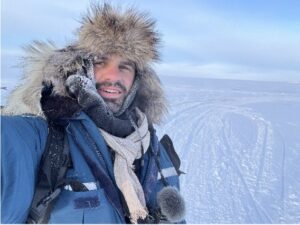 Trevor Wallace has built a dynamic career in archaeology and documentary filmmaking. He uses his work to educate and inspire audiences around the world. One of his most ambitious undertakings is the Menorca Shipwreck Project, a multi-year archaeological expedition focused on excavating ancient shipwrecks off the coast of Menorca, dating from 300 to 2,000 years old.
Trevor Wallace has built a dynamic career in archaeology and documentary filmmaking. He uses his work to educate and inspire audiences around the world. One of his most ambitious undertakings is the Menorca Shipwreck Project, a multi-year archaeological expedition focused on excavating ancient shipwrecks off the coast of Menorca, dating from 300 to 2,000 years old.
In addition to his archaeological work, Trevor is also involved in documentary film production. His projects include Among Thieves, a feature film nearing completion that explores the illicit trade in stolen archaeological artifacts. It will be screened in Bern, Switzerland, this November. Another film, Son of Labrador, follows Adventure Canada expedition leader Jason Edmunds as he journeys through the striking landscapes of Labrador and the High Arctic. Signs of Life, filmed in Nunavut, documents a songwriting workshop that brings together local high school students and elders. Trevor is also behind Sisters of the Sea, which showcases sea turtle conservation efforts in the Darién Gap through the work of the Leatherback Project, a non-governmental organization dedicated to protecting endangered sea turtles and promoting the rights of nature.
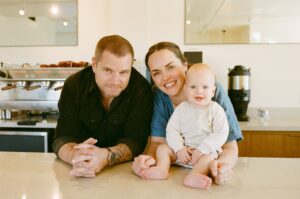 Gracie Gates and her husband, Ryan Dobosh, plan to open a second location of Little King in the Post Montecito in June 2025. Gracie honed her expertise at acclaimed Austin restaurants like Emmer & Rye and Launderette, eventually becoming the Food & Beverage Director at The Carpenter Hotel. After nearly six years in Texas, she returned to the Central Coast in 2020 to help open Bar Le Côte in Los Olivos as its General Manager. Originally from the Pacific Northwest, Ryan appreciated hospitality while working at Uchi, The Walrus & The Carpenter, and the Michelin-starred Bell’s. He and Gracie have spent nearly a decade running fine-dining restaurants in Texas and California.
Gracie Gates and her husband, Ryan Dobosh, plan to open a second location of Little King in the Post Montecito in June 2025. Gracie honed her expertise at acclaimed Austin restaurants like Emmer & Rye and Launderette, eventually becoming the Food & Beverage Director at The Carpenter Hotel. After nearly six years in Texas, she returned to the Central Coast in 2020 to help open Bar Le Côte in Los Olivos as its General Manager. Originally from the Pacific Northwest, Ryan appreciated hospitality while working at Uchi, The Walrus & The Carpenter, and the Michelin-starred Bell’s. He and Gracie have spent nearly a decade running fine-dining restaurants in Texas and California.
Gracie writes: “Little King was born out of a love for coffee and community. My husband, Ryan Dobosh, and I spent years working in fine dining, and we wanted to take our love of hospitality and infuse great service into the everyday lives of our neighbors. We aim for our spaces to be filled with people enjoying a cookie with their 4-year-old, meeting their next-door neighbor, or playing a weekly chess game. Ryan infamously made our wifi password “nozoommeetings” not to discourage guests from working in our spaces but to encourage in-person connection. It will not always be the quietest coffee shop on the block; Little King is a place to enjoy each other’s company. Inspired by my time at Cate, I have spent my life fostering and building community. There is no better group of people to appreciate how we try to welcome guests into our spaces. Enjoy some coffee and say hello. I am also dreaming up a Muffet’s Tuffets Affogato, which you can convince me to bring to life! Go Rams!”
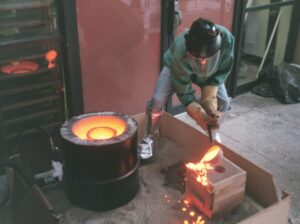 Nathan Martin has always been an artist at heart. From his early days at Cate, honing his craft in the ceramics studio, his passion for creativity has taken him worldwide. Today, he serves as the Sculpture Technician at Pomona College, overseeing the woodshop and metal shop while guiding students in their artistic pursuits.
Nathan Martin has always been an artist at heart. From his early days at Cate, honing his craft in the ceramics studio, his passion for creativity has taken him worldwide. Today, he serves as the Sculpture Technician at Pomona College, overseeing the woodshop and metal shop while guiding students in their artistic pursuits.
Nathan’s journey has been anything but conventional. Though initially studying computer science, he later gravitated toward geology and archaeology, deepening his fascination with materials and craftsmanship. This passion led him across continents—spending months in India, Japan, and the Philippines—where he immersed himself in ancient pottery techniques, metal casting, and 3D printing. An invitation from Shuta Kobayashi ’14 sparked his trip to the Philippines.
Nathan’s experimental approach to sculpture pushes boundaries. For a senior project that defied expectations, he superheated copper to 2,000 degrees, creating a massive 30-pound crystal that impressed even his professors. His work seamlessly blends innovation and tradition, from casting bronze to designing performance-driven ceramic pieces.
Beyond the studio, Nathan is a natural entrepreneur. While working at an art supply store, he launched a successful jewelry business, first selling at local markets before expanding online. His creativity extends beyond his work—he’s passionate about building community, whether through hosting collaborative workshops or inspiring curiosity in students. Nathan’s career is a testament to following passion over convention. Whether shaping clay, casting metal, or experimenting with new materials, he proves that art isn’t just about creation—it’s about discovery.
